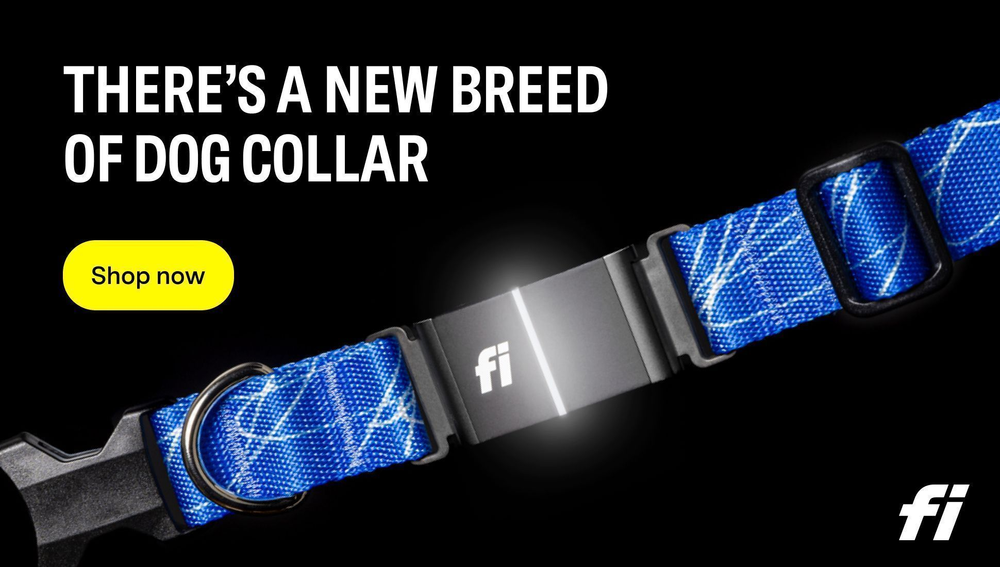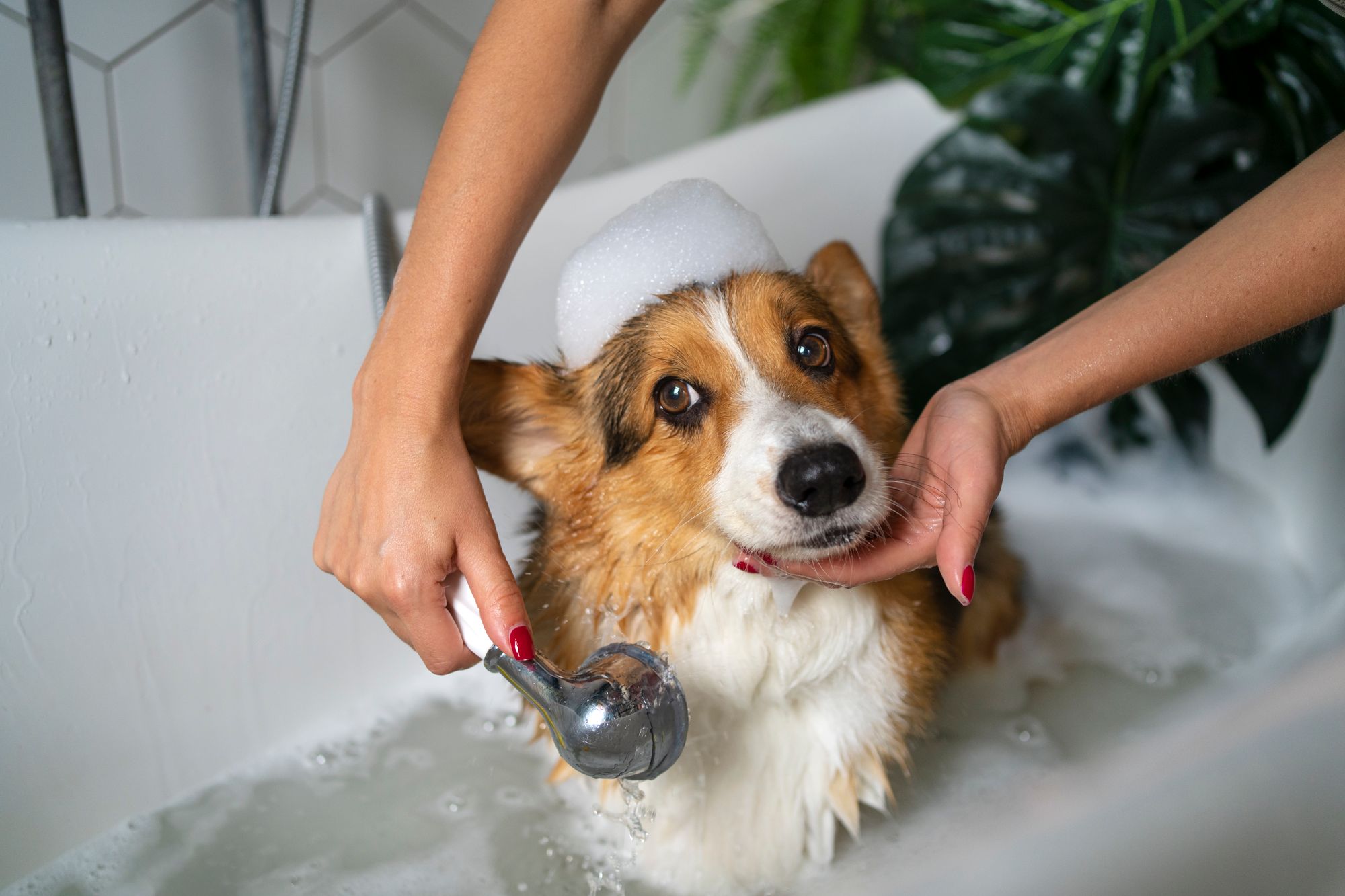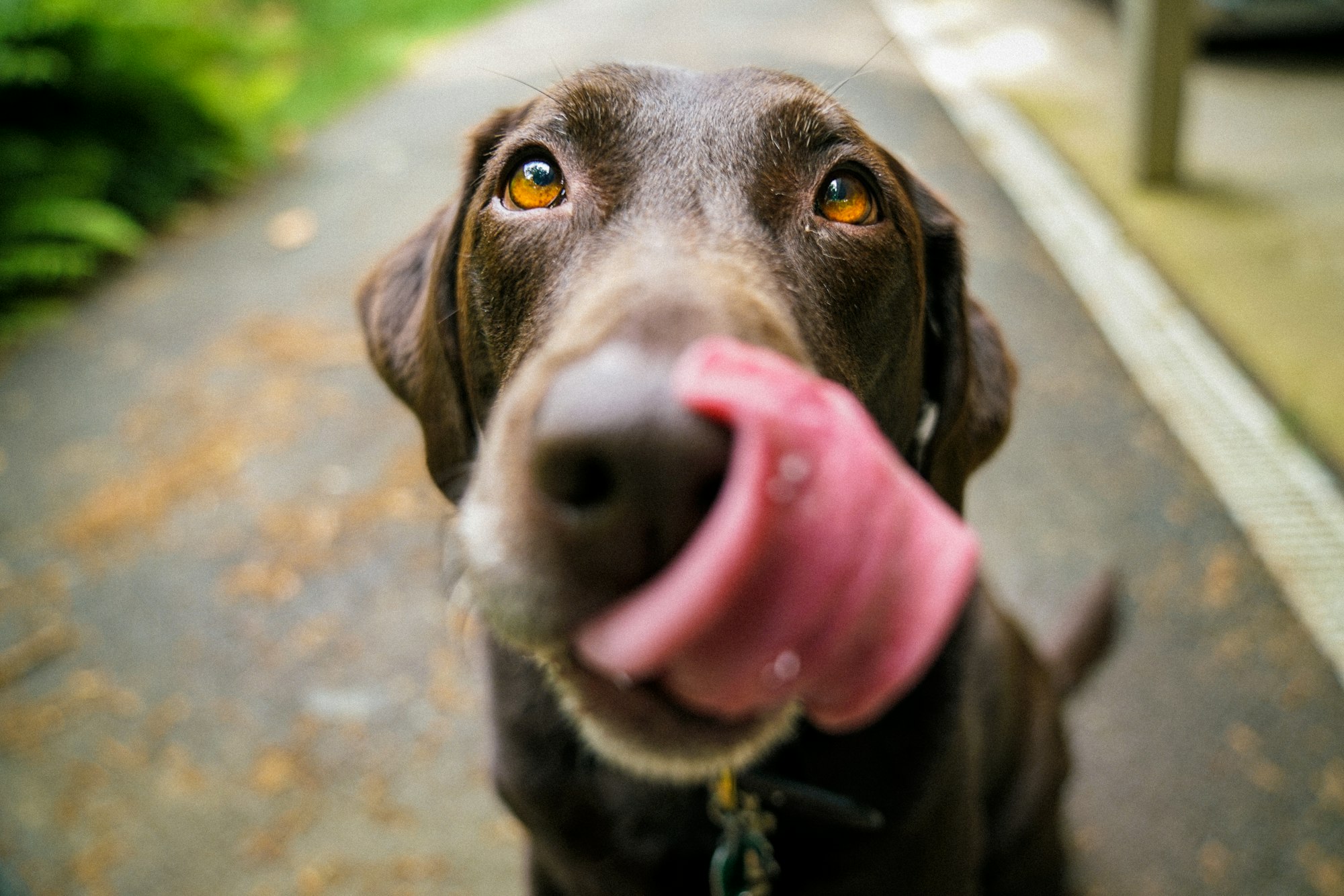
If your dog has dandruff, there's no need to fret. Dogs can get flaky skin just like humans, but there's a solution. Dog dandruff shampoos are specially formulated to treat and improve this condition. In this guide, we'll walk you through everything you need to know about these shampoos. We'll discuss the causes of dandruff in dogs, share tips on choosing the right shampoo, and provide guidance on how to use it effectively. By following these simple steps, you can help ease your dog's dandruff and bring back the luster to their coat. Say goodbye to pesky flakes and hello to a healthy, shiny pup!
What is Dog Dandruff Shampoo?
Dog Dandruff Shampoo is an especially formulated product to treat dandruff in dogs. Available in a variety of phrasings, these shampoos target both the symptoms and the root cause of dandruff.
They contain constituents like oatmeal, aloe vera, and glycerin that work together to soothe and moisturize dry and bothered skin. By furnishing essential humidity, these constituents help soothe shelling skin and reduce itching.
In addition to their moisturizing parcels, some dog dandruff shampoos contain specifics that give fresh benefits. These treated shampoos frequently contain constituents like salicylic acid to help slip and slip dead skin cells. They also help fight organisms that may be causing skin infections, thereby relieving any associated discomfort or vexation.
What are the Causes of Dog Dandruff: Exploring Factors That Contribute to Dandruff in Dogs
Dandruff in dogs can have various causes, and understanding these factors is crucial in effectively managing and addressing the condition. Here are some common causes of dog dandruff:
Dry Skin
Dogs can get dandruff due to dry skin, just like humans. Dry skin can cause flaky patches and itchiness in dogs. This happens when their skin loses moisture and natural oils, which can be due to environmental conditions, allergies, or health issues. Dry skin can lead to flakiness and dandruff on a dog's coat, causing discomfort. It's important to address dry skin in dogs to prevent dandruff and improve their skin health. Specialized dog dandruff shampoos and moisturizers can help alleviate dryness. Regular grooming and a balanced diet can also keep a dog's skin hydrated and healthy, promoting a shiny and itch-free coat.
Factors that contribute to dry skin include:
Environmental Conditions: Environmental conditions play a significant role in causing dog dandruff. When dogs are exposed to low humidity levels, unprepossessed weather, or excessively dry climates, their skin can lose its natural moisture, leading to dryness and the minutiae of dandruff. These conditions can strip yonder the essential oils that alimony the skin hydrated, leaving it vulnerable to flaking and itchiness. It is important to provide proper superintendency and protection for dogs in such environments to prevent dandruff and maintain healthy skin.
Over-bathing: Frequent bathing with harsh or drying shampoos can remove the natural oils that moisturize the skin, leading to dryness and dandruff.
Allergies
When dealing with dog dandruff issue, one cannot overlook potential allergic reactions caused by food intake or environmental factors – they may represent vital components in its progression. Inflammation from seasonal allergy exposure or triggers through different irritants could be responsible for itchiness, redness and flakiness discernible on a dog’s skin. Allergies come as either airborne pollutants like pollen particles & dust mites or specific foods ingredients that provoke an immune system reaction. To alleviate these symptoms and reduce the incidence of skin inflammation, it’s crucial to pinpoint potential triggers. Consulting with a qualified veterinarian will support the efforts of identifying suitable solutions that can create a conducive environment for overall well-being while minimizing exposure risks.
Common allergens include:
Food Allergies: As with humans, dogs may suffer from food allergies that can cause skin issues and dandruff. Grains, proteins, and additives are common triggers for these allergic reactions in many dogs. If you notice frequent itching or flakiness on your dog's skin, along with redness and other symptoms, consider the possibility of a food allergy. Consulting a veterinarian is vital to determine the specific allergens causing such reactions. They can also recommend an elimination trial or suitable diet to manage this issue effectively and reduce dandruff caused by allergies. Remember taking steps to address food allergies could not only enhance your dog's overall well-being but their skin health too.
Environmental Allergens: Pollen, dust mites, mold, or certain chemicals present in the environment can trigger allergies in dogs, leading to dandruff and skin irritation.
Poor Diet: A dog's diet plays a crucial role in their overall health, including the condition of their skin and coat. Nutritional deficiencies or an unbalanced diet can contribute to dandruff in dogs.

Factors related to poor diet include:
Lack of Essential Fatty Acids: Omega-3 and omega-6 fatty acids are essential for maintaining healthy skin and coat. Deficiencies in these nutrients can lead to dryness and dandruff.
Low-Quality Food: Poor-quality commercial dog foods that lack necessary nutrients can compromise the dog's skin health, resulting in dandruff.
Underlying Health Conditions:
Certain underlying health conditions can manifest as dandruff in dogs. These conditions require veterinary diagnosis and treatment. Some common health issues associated with dandruff include:
Seborrheic Dermatitis: This is a skin disorder characterized by abnormal sebum production, resulting in flaky skin, itching, and dandruff.
Hypothyroidism: An underactive thyroid gland can affect the dog's skin health, leading to dryness, flakiness, and dandruff.
Allergic Dermatitis: Dogs with allergic dermatitis, an inflammatory skin condition triggered by allergens, may experience dandruff as a symptom.
It's important to note that dandruff in dogs can have multiple causes, and sometimes it may be a combination of factors contributing to the condition. Proper diagnosis by a veterinarian is essential to identify the specific cause and develop an appropriate treatment plan.
Advantages of using dog dandruff shampoo
Dog dandruff can be a bothersome condition for both dogs and their owners. It is characterized by dry, flaky skin that can cause itchiness and discomfort. To address this issue, using a specialized dog dandruff shampoo can provide numerous benefits. In this section, we will explore the advantages of using dog dandruff shampoo and how it promotes a healthy coat and skin.
Soothing and Moisturizing the Skin:
One of the primary benefits of using a dog dandruff shampoo is its ability to soothe and moisturize the skin. These shampoos are specifically formulated with ingredients that help hydrate and nourish the skin, reducing dryness and flakiness. Let's delve into the key advantages in this aspect:
Hydration: Dog dandruff shampoos often contain ingredients like oatmeal, aloe vera, or coconut oil, which have moisturizing properties. These ingredients help replenish lost moisture in the skin, relieving dryness and minimizing the appearance of flakes.
Calming Itchiness: Dandruff is often accompanied by itchiness, which can lead to excessive scratching and skin irritation. Dog dandruff shampoos may contain soothing ingredients like chamomile or tea tree oil, which help alleviate itchiness and provide relief to the dog.
Reducing Inflammation: Inflamed skin can exacerbate dandruff symptoms. Many dog dandruff shampoos incorporate anti-inflammatory ingredients such as lavender or calendula, which help calm irritated skin and reduce redness.
Controlling Dandruff and Flakiness:
Dog dandruff shampoos are specifically designed to address the root cause of dandruff and help control its occurrence. Here are some key benefits in terms of controlling dandruff and reducing flakiness:
Exfoliation: Some dog dandruff shampoos contain gentle exfoliating agents like salicylic acid. These agents help remove dead skin cells and promote healthy skin turnover, reducing the formation of dandruff flakes.
Deep Cleansing: Dandruff shampoos often have deep-cleansing properties, effectively removing excess oil, dirt, and debris from the dog's skin and coat. This cleansing action helps prevent the buildup of flakes and keeps the skin clean and healthy.
Balancing Sebum Production: The sebaceous glands in a dog's skin produce natural oils called sebum, which help moisturize the skin and maintain its health. Some dandruff shampoos help balance sebum production, ensuring that the skin is neither too dry nor too oily, thereby reducing the likelihood of dandruff formation.
Promoting a Healthy Coat:
In addition to addressing dandruff, dog dandruff shampoos offer several benefits that contribute to a healthy, lustrous coat. These advantages include:
Strengthening the Hair: Many dandruff shampoos are enriched with ingredients like keratin or protein, which help strengthen the hair shafts and reduce breakage. This leads to a healthier, more resilient coat.
Enhancing Shine: Dandruff shampoos often contain ingredients like jojoba oil or vitamin E, which nourish the hair follicles and add shine to the coat. Regular use of these shampoos can help restore the coat's natural luster and brilliance.
Detangling and Conditioning: Some dog dandruff shampoos offer detangling and conditioning properties. These features help minimize matting and make the coat more manageable, promoting a well-groomed appearance.
Addressing Specific Skin Conditions:
Certain dog dandruff shampoos are formulated to target specific skin conditions that may contribute to dandruff. These shampoos offer specialized benefits for dogs with underlying skin issues:
Allergies: Dogs with allergies often experience skin irritation and dandruff as a result. Dog dandruff shampoos that are specifically formulated for allergy-prone dogs can help soothe the skin, reduce itchiness, and alleviate dandruff caused by allergic reactions.
Seborrheic Dermatitis: Seborrheic dermatitis is a common skin condition characterized by excessive oil production, flakiness, and inflammation. Some dog dandruff shampoos contain ingredients like sulfur or coal tar, which have anti-fungal and anti-inflammatory properties to manage seborrheic dermatitis and its associated dandruff.
Dry Skin: Dry skin is a leading cause of dandruff in dogs. Dandruff shampoos designed for dry skin typically contain hydrating ingredients like shea butter or glycerin, which help moisturize the skin and reduce flakiness caused by dryness.
Improving Overall Skin and Coat Health:
Regular use of dog dandruff shampoo can contribute to the overall health of your dog's skin and coat. These benefits extend beyond just managing dandruff:
Prevention of Secondary Infections: Dandruff can create an environment conducive to bacterial or fungal growth, leading to secondary infections. By addressing dandruff and maintaining a healthy skin barrier, dog dandruff shampoos help reduce the risk of such infections.
Odor Control: Dandruff can sometimes contribute to an unpleasant odor. Dog dandruff shampoos often contain deodorizing agents that help eliminate odors and leave the coat smelling fresh.
Enhanced Comfort and Well-being: Dogs with dandruff may experience discomfort and itchiness, impacting their overall well-being. By using a dandruff shampoo, you can help alleviate these symptoms, promoting a more comfortable and contented dog.
Tips for Using Dog Dandruff Shampoo:
Preparing for the Bath: Before you begin bathing your dog with dandruff shampoo, it's important to make the necessary preparations to ensure a smooth and effective bath session.
Brushing the Coat: Start by brushing your dog's coat to remove any loose fur, tangles, or debris. This helps to prevent further irritation and allows the shampoo to penetrate the skin more effectively.
Gathering Supplies: Ensure you have all the supplies you need within reach, including the dandruff shampoo, towels, a non-slip mat or surface, and a handheld showerhead or bucket for rinsing.

Bathing Techniques
Proper bathing techniques are essential to maximize the benefits of the dandruff shampoo and ensure thorough cleansing of your dog's skin and coat.
Wetting the Coat: Thoroughly wet your dog's coat with lukewarm water. Avoid using hot water as it can further dry out the skin.
Applying the Shampoo: Follow the instructions on the dandruff shampoo bottle for the recommended amount to use. Apply the shampoo evenly across your dog's coat, focusing on areas affected by dandruff. Gently massage the shampoo into the skin using circular motions to ensure it reaches the underlying layers.
Massaging the Skin: While applying the shampoo, take the opportunity to give your dog a relaxing massage. This helps to stimulate circulation and promote the absorption of the shampoo's beneficial ingredients.
Rinsing Thoroughly: Thoroughly rinse your dog's coat with lukewarm water to remove all traces of shampoo. Make sure to rinse until the water runs clear, as any residue left behind can cause further irritation.
Frequency of Use
The frequency of using dandruff shampoo may vary depending on your dog's specific needs and the severity of their dandruff. Here are some general guidelines to consider:
Consult with Your Veterinarian: Consult your veterinarian to determine the ideal frequency of using the dandruff shampoo for your dog. They can provide personalized recommendations based on your dog's condition and skin type.
Start with Regular Use: Initially, you may need to use the dandruff shampoo more frequently, such as once or twice a week, to address the dandruff issue. As your dog's condition improves, you can gradually reduce the frequency to a maintenance level, such as once every few weeks or as recommended by your veterinarian.

Post-Bath Care
After bathing your dog with dandruff shampoo, there are a few essential post-bath care steps to follow to ensure their comfort and maintain the benefits of the shampoo.
Drying the Coat: Gently towel dry your dog's coat to remove excess moisture. Avoid vigorous rubbing, as it can cause further irritation. If your dog is comfortable with it, you can also use a blow dryer on a low-heat setting to speed up the drying process.
Brushing: Once your dog's coat is dry, brush it again to remove any remaining loose fur and to distribute the natural oils evenly. This promotes a healthy and shiny coat.
Additional Moisturization: If your dog's skin is still dry after using the dandruff shampoo, you may consider applying a moisturizing spray or using a dog-friendly moisturizer recommended by your veterinarian. However, be sure to choose products specifically formulated for dogs and avoid using human products that may contain ingredients harmful to them.
By following these tips for using dog dandruff shampoo, you can effectively address your dog's dandruff problem and promote a healthier skin and coat. Remember to consult with your veterinarian for personalized advice and to monitor your dog's progress.
Conclusion:
Using a specialized dog dandruff shampoo offers numerous benefits in promoting a healthy coat and skin for your furry friend. From soothing and moisturizing the skin to controlling dandruff and enhancing overall skin and coat health, these shampoos address the underlying causes of dandruff and contribute to a more comfortable and well-groomed dog. By selecting a high-quality dog dandruff shampoo and incorporating it into your dog's grooming routine, you can effectively manage dandruff and support a healthy, lustrous coat for your beloved canine companion. Remember to consult with your veterinarian to determine the most suitable dandruff shampoo for your dog's specific needs and conditions.






